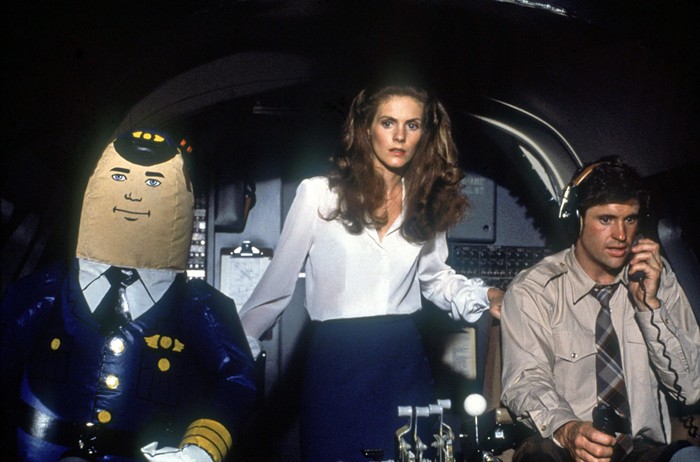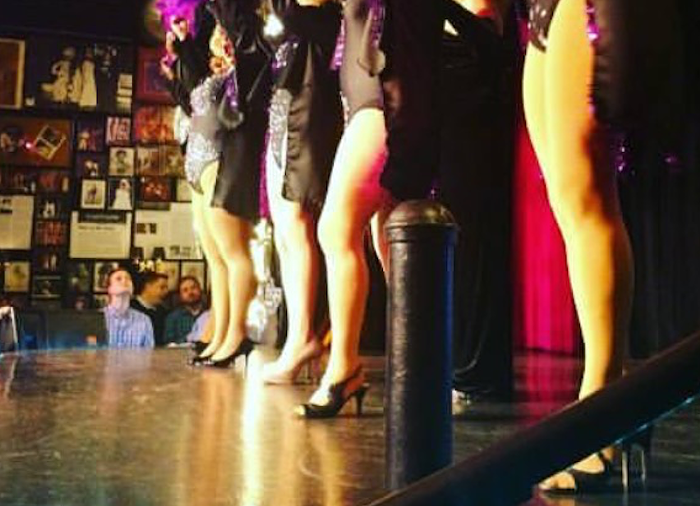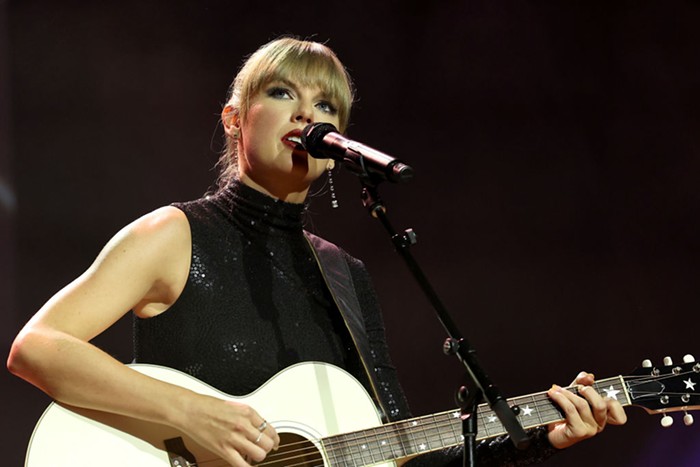
- C. Duggan
- Camille A. Brown and dancers, miming minstrelsy
Tonight was the final run of Camille A. Brown’s Mr. TOL. E. RAnCE, presented by White Bird. Too bad, because it’s really something more people should see. The dancers are incredible—dynamic, demanding, and emotive, for 45 minutes straight—accompanied by live, virtuosic piano playing (Scott Patterson), the troupe takes you through hip-hop, vaudeville, tap dancing…minstrelsy. Which brings it around to the heart of the matter (and there’s a lot of heart in this show): it sticks with you.
In one sense, the obvious sense, Mr. TOL. E. RAnCE is a study of racial types in the media (read: stereotypes—the thug, the video vixen) throughout the ages. The show starts with Patterson, alone on stage, playing incredibly, ragtime jazz; a video projection takes us through the credits, which star animations of famous black entertainers (Whoopi Goldberg, Dave Chapelle). This projection gives way to jerky archival footage, African Americans dancing in suits and corsets, in sepia tone. The dancers take to the stage, miming minstrelsy (the show is largely influenced by Spike Lee’s Bamboozled), tap dancing like madmen, and, later, slinging insults at one another, street posturing.
The piece has been brewing for a couple years and has been informed by intense research, although it’s in no way pedantic or dry. One of the greatest strengths of the show is its humor. At one point there’s a projection of the Fresh Prince of Bel-Air, whose head jankily shifts in a simple animation; it bobs back and forth as the dancers break out in the show’s theme song. The dancers take turns saying catchphrases of black characters from famous sitcoms, “dyn-o-MITE,” (Good Times), which shifts to parroting of “whatchu talking about Willis” (Diff’rent Strokes), and—the audiences’ laughter slowly dying down at this point—the dancers saying, increasingly aggressively, “I don’t know nuthin bout birthin no babies” (Gone with the Wind).
More important than exposing these stereotypes though, or just shaking a finger at the reductiveness of them, Brown makes us consider how we participate in these stereotypes, and how we—both the creator of the stereotype and sometimes even the victim of the stereotype—perpetuate and participate in profiling. By using humor, by making the audience laugh and invoking a physical, measurable response to the work, we become involved in the performance. And in a way, we participate in these stereotypes, which leaves one with an uncomfortable, sinking feeling, as one begins to realize just how invasive, discrete, and numbingly habitual such static representations can be.
At the end of the show, there was a “mandatory” Q&A. Thursday’s discussion was moderated by choreographer Kemba Shannon, who summed the night up by saying she felt like she had just had some “orange juice, some Sprite, and some milk.” The show was an amalgam to be sure—one that takes some time to parse out and that luckily has the potency to stick in your head, so you can hopefully do some work on it.












